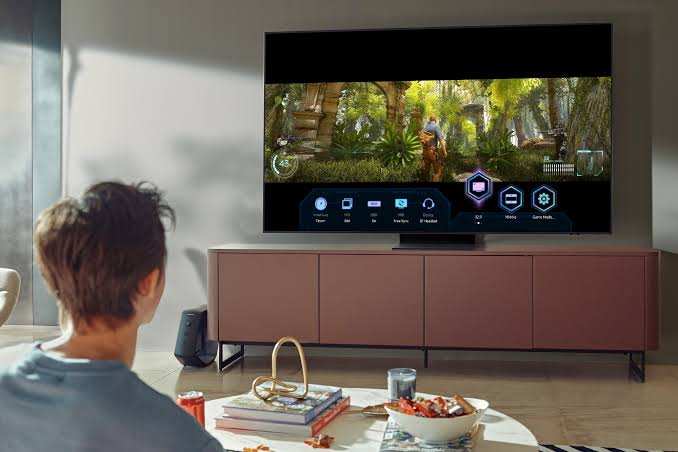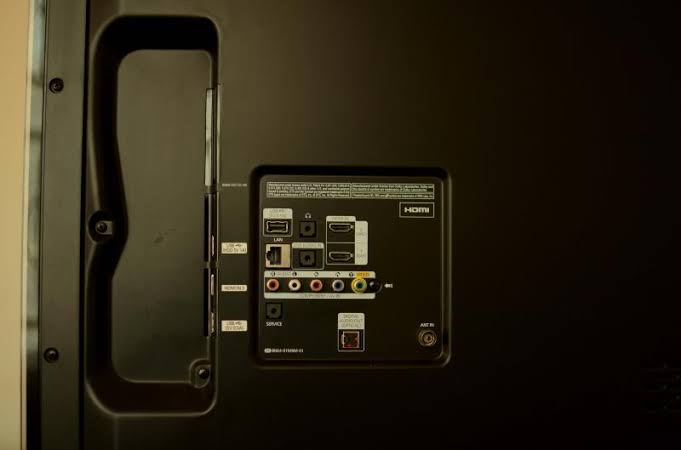Best Equalizer Settings for Samsung TV
Do you ever feel like the sound from your Samsung TV just isn’t quite right?
Maybe the dialogue is too quiet, or the music is too overpowering.
Well, you’re not alone. This tends to happen often, and it can be especially frustrating when you’ve invested in a high-quality Samsung TV.
Luckily, there are some simple adjustments you can make to your TV’s equalizer settings to help you achieve the best possible sound.
By adjusting the bass, treble, and other sound settings, you can find the perfect balance for your specific needs.
Does Samsung TV have an Equalizer
If you’re wondering whether your Samsung TV has an equalizer setting, the answer is yes.
Samsung TVs come with an equalizer that allows you to adjust the sound.
With the equalizer, you can tweak the sound settings to get the best audio experience when watching TV shows, movies, or playing games.
The equalizer on a Samsung TV is typically found in the sound settings menu.
To access the sound settings, press the Home button on your remote control, navigate to Settings, and then select Sound.
From there, you can adjust various sound settings, including the equalizer.
The equalizer on a Samsung TV allows you to adjust the frequency levels of the sound output. You can adjust the bass, treble, and mid-range frequencies to your liking.
If you prefer a more bass-heavy sound, you can increase the bass frequency. If you want a more balanced sound, you can adjust the mid-range frequencies.
And if you want a more crisp and clear sound, you can increase the treble frequency.
It’s worth noting that the equalizer settings on a Samsung TV may vary depending on the model and year of your TV.
Some newer Samsung TVs come with more advanced sound settings, such as adaptive sound and dialogue enhancement, which can help improve the audio experience even further.
How to Adjust Equalizer Settings on Samsung TV
Adjusting your Samsung TV sound by tweaking the device equalizer is relatively easy, all you have to do is to locate the equalizer settings of your TV.
This is mostly located in the advanced settings area of the device sound settings.

Here’s how to locate the equalizer settings of your Samsung TV:
- Navigate to the left sidebar on your TV’s screen to open the options.
- Click on the gear settings icon to access the Settings menu.
- Scroll down and click on Sound to access the sound settings.

- Locate and click on Expert Settings to access advanced sound settings.
- Click the first option that says Equalizer to access the equalizer settings.
- From here, you can adjust the sound levels for different frequencies to customize your TV’s audio output to your taste.
- You can use the sliders to increase or decrease the bass, treble, and mid-range frequencies.
It’s important to note that if your TV is set to use external speakers, some of the settings under Expert Settings will be grayed out and unavailable for adjustment.
Best Equalizer Settings for Samsung TV

Since adjusting the equalizer settings can be a game-changer, you will want to have the right settings for your TV.
Here is a recommended setting, considered the best equalizer settings for standard and quality sound on Samsung TV.
Set you TV equalizer according to the below details:
Set the 100 Hz to 10
Setting the 100 Hz to 10 will increase the bass, giving you a more powerful sound. This setting is perfect for action movies or music with a strong beat.
Set the 200 Hz to 5
The 200 Hz setting controls the lower midrange frequencies. Setting it to 5 will give you a fuller sound without overpowering the bass.
Set the 500 Hz to 2
The 500 Hz setting controls the midrange frequencies. Setting it to 2 will give you a more natural sound, making voices and instruments sound clearer.
Set the 1 KHz to 0
The 1 KHz setting controls the upper midrange frequencies. Setting it to 0 will prevent the sound from becoming too harsh or shrill.
Set the 2 KHz to 2
The 2 KHz setting controls the high frequencies. Setting it to 2 will give you a brighter sound without being too sharp.
Set the 5 KHz to 5
The 5 KHz setting controls the upper high frequencies. Setting it to 5 will make the sound more detailed and crisp.
Set the 10 KHz to 10
The 10 KHz setting controls the highest frequencies.
Setting it to 10 will give you a more spacious sound, making the soundstage wider and more immersive.
However, keep in mind that these settings may vary depending on your personal preference and the type of content you’re watching.
Play around with the settings until you find the perfect balance that suits your preference.
Troubleshooting Equalizer Settings
If you’re having trouble with your Samsung TV’s equalizer settings, don’t worry. It’s a common issue that can be easily fixed.
In this section, I’ve cover some common issues and their fixes, as well as when to reset your equalizer settings.
Common Issues and Fixes
1. No Sound
If you’re not getting any sound from your TV, double-check your equalizer settings. Make sure the volume is turned up and that the equalizer is set to “Flat” mode.
If that doesn’t work, check the sound settings on your TV or projector to make sure they’re set up correctly.
You can also try adjusting the equalizer settings to see if that helps.
2. Low Sound Quality
If your TV’s sound quality is low, try adjusting the equalizer settings to see if that helps.
You might also want to consider connecting external speakers or a soundbar to your TV for better sound quality.
3. Distorted Sound
If your TV’s sound is distorted, it could be due to a problem with the equalizer settings. Try adjusting the equalizer settings to see if that helps.
If not, check the sound settings on your TV or projector to make sure they’re set up correctly.
When to Reset Equalizer Settings
If you’ve tried adjusting the equalizer settings and are still having issues with your TV’s sound, you might want to consider resetting the equalizer settings.
This will reset all of the equalizer settings to their default values, which can help fix any issues you’re having.
To reset the equalizer settings on your Samsung TV, go to Home >> Settings >> Sound >> Expert Settings >> Reset Sound.
Keep in mind that this will reset all of your sound settings, not just the equalizer settings.
Final Thought
Now that you have learned about the best equalizer settings for your Samsung TV, you can enjoy your favorite movies and TV shows with the best sound quality possible.
Remember, the optimal equalizer settings may differ based on your satisfaction and the type of content you are watching.
Always experiment with different settings and find the ones that work best for you. Use the available sound modes and advanced settings for customization.
If you are a fan of action movies, you may prefer a setting with more bass, while if you are watching a drama, you may want to adjust the equalizer to emphasize the dialogue.
People Also Ask
Can you change the bass on a Samsung TV?
Yes, you can change the bass on your Samsung TV. You can do this by accessing the Expert Settings in your TV’s sound settings.
To do this, press the Home button on your remote, go to Settings, select Sound, and then select Expert Settings. From here, you can adjust the bass levels.
What EQ gives the most bass?
If you want to get the most bass out of your Samsung TV, you should adjust the EQ settings to boost the lower frequencies.
Specifically, you should increase the levels of the 60Hz and 250Hz bands. However, be careful not to increase the levels too much, as this can result in distortion and a loss of clarity in the audio.
How do I adjust the bass on my Samsung Smart TV?
To adjust the bass on your Samsung Smart TV, you can use the Expert / Advanced Settings in the sound settings.
Press the Home button on your remote, go to Settings, select Sound, and then select Expert Settings. From here, you can adjust the bass levels using the Bass tab.
Related Articles






